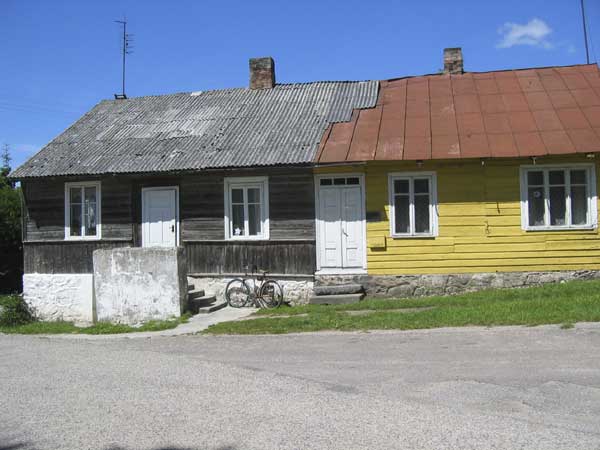Touring Present-Day Vištytis Part 1
There is no physical evidence now that Vištytis was once a much larger town. Much of the town was destroyed by a fire in August of 1901. The town was rebuilt before WWI, and was again extensively damaged by Russians fleeing from East Prussia in 1916. In the 1800s, it had a population of approximately 3,000, half of whom were Jews. Today the population is around 650, and there are, of course, no Jews at all.
We drove and parked in the main square. The following pictures were all taken in that area.
The town square was very pleasant with many shade trees as shown. The first statue is of the Lake Goddess, but we did not get her exact story.

There follow two views of the statue/monument showing the town logo and the head of Great Duke Vytautas. The head on this monument was removed when Lithuania was part of the Soviet Union and was replaced after 1991, with a new head of the Duke.
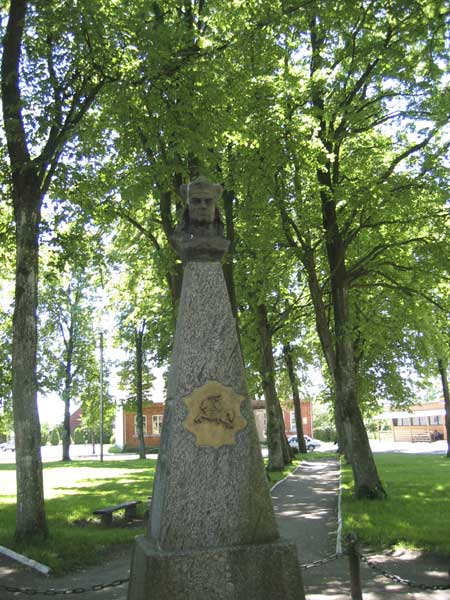
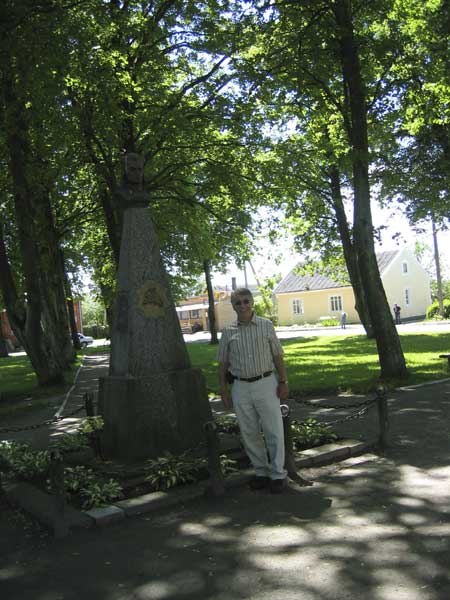
This is a picture of the store at the west end of the square.
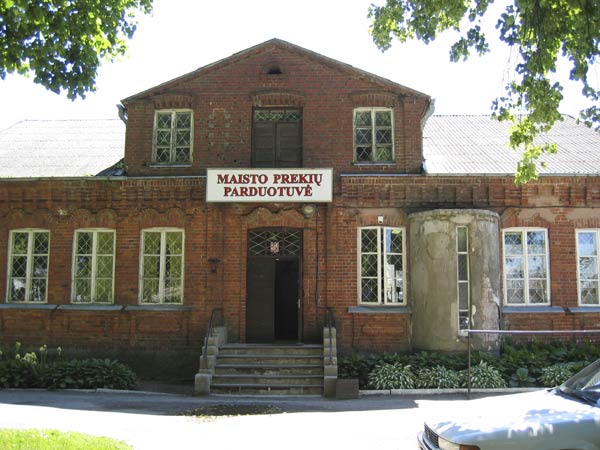
The Lake is about 150M behind it. This is a small general store that had a lot of stock but did not carry any Vištytis T-shirts or similar goods (I had hoped to buy some souvenirs). There is a restaurant/tavern on the north end of the square next to the food store.
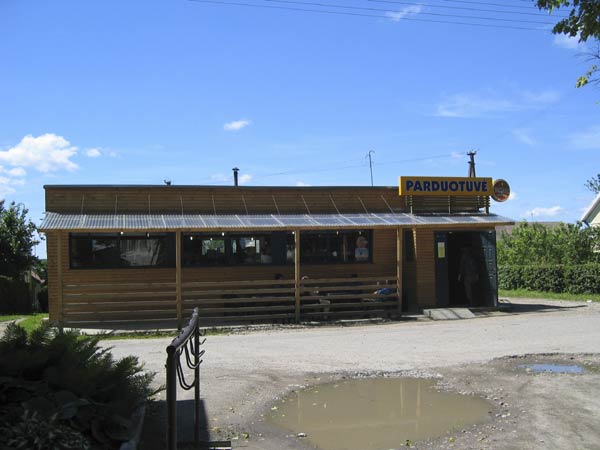
This picture is the parking lot next to the above food store which had the two interesting vehicles parked in it.
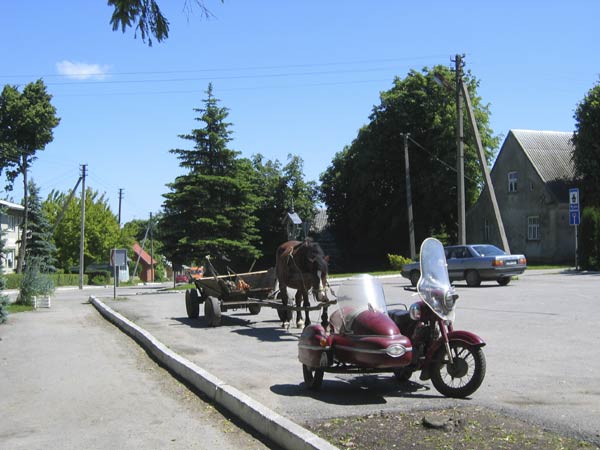
This was the only horse/wagon we saw in Vištytis, although we did see horse drawn farm implements in Vištytis and on the trip from Vilnius to Vištytis.
These two pictures are views from the west end of the town square looking east towards the Catholic Church.
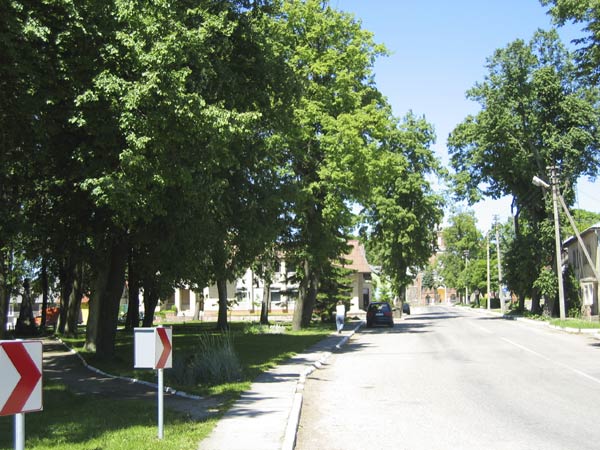
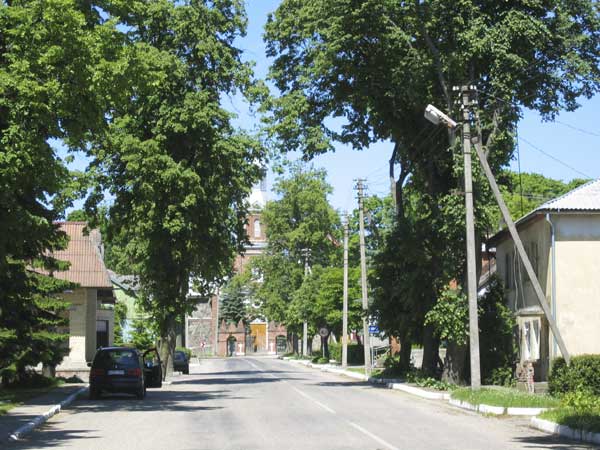
The house, which Bert Oppenheim identified as the former Linde home, is on the right side and is now the town infirmary (position does not agree with his map, but he is excused). The next picture is taken from the store parking lot West towards the lake.

Our next stop was to meet the mayor, Bronislovas Polita. He has been the mayor since 1988, which means that he has been in office since the Soviet era. Bronislovas told us that he has been in civic service for 25 years and has been both appointed and elected to his current office. He does not speak English but we were able to speak to him easily through Ruta Puisyte, who is an excellent translator and had arranged our meeting with him. Bronislovas asked Ruta how she was able to get his cell number as, we assumed, he would rather be contacted through his office number.
It was interesting to observe that Bronislovas' secretary was working on a computer, but he told us that they did not yet have net access. We spent about three very enjoyable hours with the mayor, interrupted only by his many cell phone calls.
This picture in Bronislovas' office is of the official town flag.
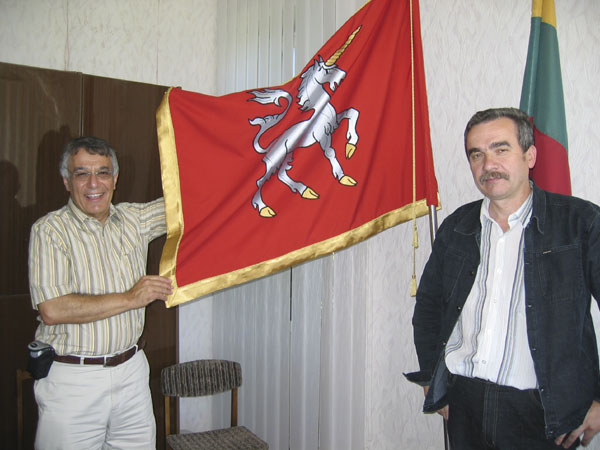
We showed the mayor Bert's article from his 1994 visit (Bert advised he also met with him) and he said that he recognized all of the buildings and would show them to us.
Our first stop was the red brick former Linde home (all house identifications are from Bert's article). This house is just beyond the south side of the town square and is now the infirmary.
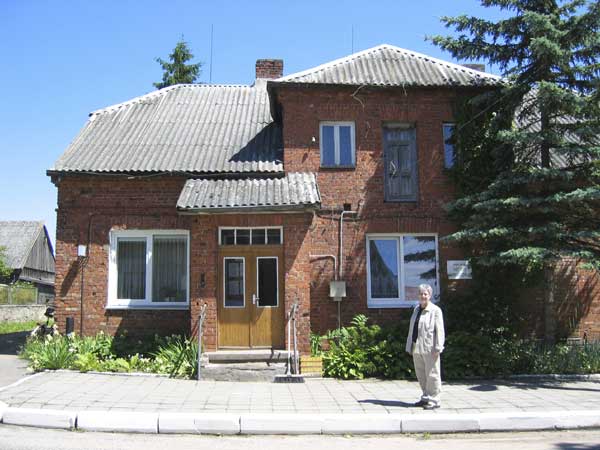
The next shot is from the same spot in front of the house but looking towards the Catholic Church.

This house clearly had a second story balcony that has fallen away.
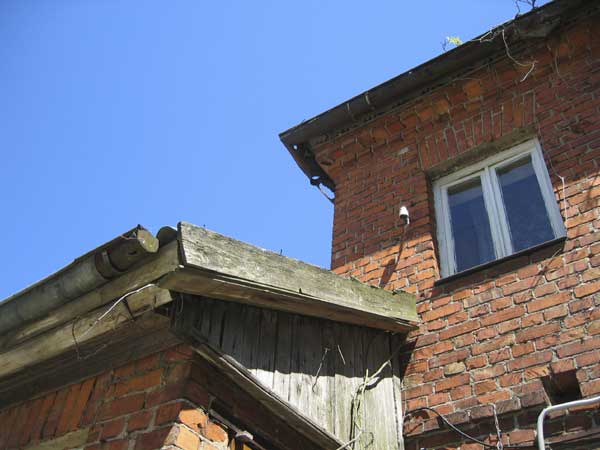

We aroused quite a bit of interest from the persons inside the infirmary when we were taking these pictures. Ruta told us that the local residents still have concerns that the relatives of the former Jewish residents will try to claim back family properties. Bert Oppenheim told me that the local residents destroyed all of the local municipal records, including the synagogue records, in 1944 to prevent anyone from making claims against any of the property in Vištytis.
We then went just off the northwest corner of the town square, where the mayor identified the former Shimelson/Rubenstein house.
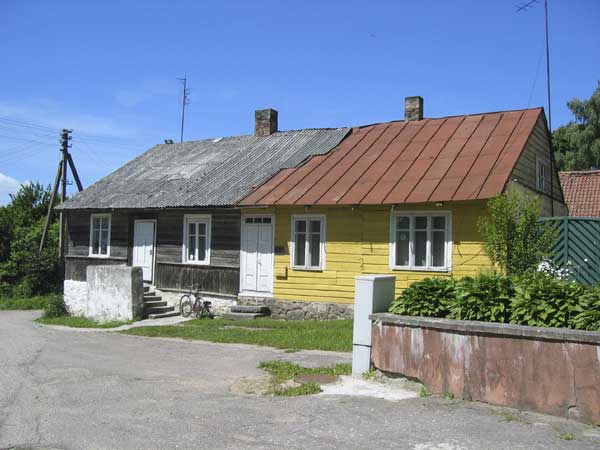
Only the unpainted left side of the house is now occupied. I was interested to see the white five-pointed star in the house window, which I think was a commercial sign for some type of home delivery.
